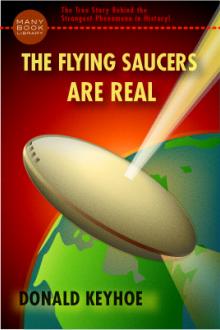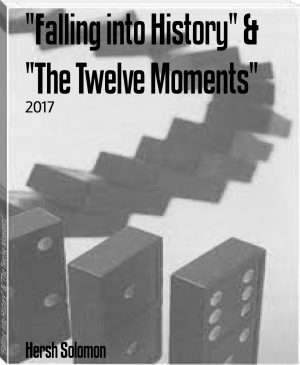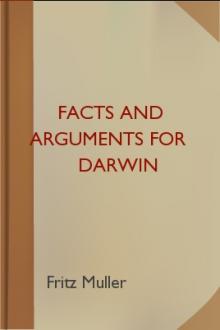The Expression of Emotion in Man and Animals by Charles Darwin (adult books to read TXT) 📕

- Author: Charles Darwin
- Performer: -
Book online «The Expression of Emotion in Man and Animals by Charles Darwin (adult books to read TXT) 📕». Author Charles Darwin
The first sensation of fear, or the imagination of something dreadful, commonly excites a shudder. I have caught myself giving a little involuntary shudder at a painful thought, and I distinctly perceived that my platysma contracted; so it does if I simulate a shudder. I have asked others to act in this manner; and in some the muscle contracted, but not in others.
One of my sons, whilst getting out of bed, shuddered from the cold, and, as he happened to have his hand on his neck, he plainly felt that this muscle strongly contracted.
He then voluntarily shuddered, as he had done on former occasions, but the platysma was not then affected. Mr. J. Wood has also several times observed this muscle contracting in patients, when stripped for examination, and who were not frightened, but shivered slightly from the cold. Unfortunately I have not been able to ascertain whether, when the whole body shakes, as in the cold stage of an ague fit, the platysma contracts.
But as it certainly often contracts during a shudder; and as a shudder or shiver often accompanies the first sensation of fear, we have, I think, a clue to its action in this latter case.[23]
Its contraction, however, is not an invariable concomitant of fear; for it probably never acts under the influence of extreme, prostrating terror.
[23] Ducheinne takes, in fact, this view (ibid. p. 45), as he attributes the contraction of the platysma to the shivering of fear (_frisson de la peur_); but he elsewhere compares the action with that which causes the hair of frightened quadrupeds to stand erect; and this can hardly be considered as quite correct.
Dilatation of the Pupils.—Gratiolet repeatedly insists[24]
that the pupils are enormously dilated whenever terror is felt.
I have no reason to doubt the accuracy of this statement, but have failed to obtain confirmatory evidence, excepting in the one instance before given of an insane woman suffering from great fear.
When writers of fiction speak of the eyes being widely dilated, I presume that they refer to the eyelids. Munro’s statement,”
that with parrots the iris is affected by the passions, independently of the amount of light, seems to bear on this question; but Professor Donders informs me, that he has often seen movements in the pupils of these birds which he thinks may be related to their power of accommodation to distance, in nearly the same manner as our own pupils contract when our eyes converge for near vision.
Gratiolet remarks that the dilated pupils appear as if they were gazing into profound darkness. No doubt the fears of man have often been excited in the dark; but hardly so often or so exclusively, as to account for a fixed and associated habit having thus arisen.
It seems more probable, assuming that Gratiolet’s statement is correct, that the brain is directly affected by the powerful emotion of fear and reacts on the pupils; but Professor Donders informs me that this is an extremely complicated subject.
I may add, as possibly throwing light on the subject, that Dr. Fyffe, of Netley Hospital, has observed in two patients that the pupils were distinctly dilated during the cold stage of an ague fit.
Professor Donders has also often seen dilatation of the pupils in incipient faintness.
[24] `De la Physionomie,’ pp. 51, 256, 346.
[25] As quoted in White’s `Gradation in Man,’ p. 57.
Horror.—The state of mind expressed by this term implies terror, and is in some, cases almost synonymous with it. Many a man must have felt, before the blessed discovery of chloroform, great horror at the thought of an impending surgical operation.
He who dreads, as well as hates a man, will feel, as Milton uses the word, a horror of him. We feel horror if we see any one, for instance a child, exposed to some instant and crushing danger.
Almost every one would experience the same feeling in the highest degree in witnessing a man being tortured or going to be tortured.
In these cases there is no danger to ourselves; but from the power of the imagination and of sympathy we put ourselves in the position of the sufferer, and feel something akin to fear.
Sir C. Bell remarks,[26] that “horror is full of energy; the body is in the utmost tension, not unnerved by fear.”
It is, therefore, probable that horror would generally be accompanied by the strong contraction of the brows; but as fear is one of the elements, the eyes and mouth would be opened, and the eyebrows would be raised, as far as the antagonistic action of the corrugators permitted this movement. Duchenne has given a photograph[27] (fig. 21) of the same old man as before, with his eyes somewhat staring, the eyebrows partially raised, and at the same time strongly contracted, the mouth opened, and the platysma in action, all effected by the means of galvanism.
He considers that the expression thus produced shows extreme terror with horrible pain or torture. A tortured man, as long as his sufferings allowed him to feel any dread for the future, would probably exhibit horror in an extreme degree.
I have shown the original of this photograph to twenty-three persons of both sexes and various ages; and thirteen immediately answered horror, great pain, torture, or agony; three answered extreme fright; so that sixteen answered nearly in accordance with Duchenne’s belief. Six, however, said anger, guided no doubt, by the strongly contracted brows, and overlooking the peculiarly opened mouth. One said disgust.
On the whole, the evidence indicates that we have here a fairly good representation of horror and agony. The photograph before referred to (Pl. VII. fig. 2) likewise exhibits horror; but in this the oblique eyebrows indicate great mental distress in place of energy.
[26] `Anatomy of Expression,’ p. 169.
[27] `Mecanisme de la Physionomie,’ Album, pl. 65, pp. 44, 45.
Horror is generally accompanied by various gestures, which differ in different individuals. Judging from pictures, the whole body is often turned away or shrinks; or the arms are violently protruded as if to push away some dreadful object.
The most frequent gesture, as far as can be inferred from the action of persons who endeavour to express a vividly-imagined scene of horror, is the raising of both shoulders, with the bent arms pressed closely against the sides or chest.
These movements are nearly the same with those commonly made when we feel very cold; and they are generally accompanied by a shudder, as well as by a deep expiration or inspiration, according as the chest happens at the time to be expanded or contracted.
The sounds thus made are expressed by words like uh or ugh.[28]
It is not, however, obvious why, when we feel cold or express a sense of horror, we press our bent arms against our bodies, raise our shoulders, and shudder.
[28] See remarks to this effect by Mr. Wedgwood, in the Introduction to his `Dictionary of English Etymology,’ 2nd edit. 1872, p. xxxvii. He shows by intermediate forms that the sounds here referred to have probably given rise to many words, such as ugly, huge, &c. Conclusion.—I have now endeavoured to describe the diversified expressions of fear, in its gradations from mere attention to a start of surprise, into extreme terror and horror.
Some of the signs may be accounted for through the principles of habit, association, and inheritance,—such as the wide opening of the mouth and eyes, with upraised eyebrows, so as to see as quickly as possible all around us, and to hear distinctly whatever sound may reach our ears. For we have thus habitually prepared ourselves to discover and encounter any danger.
Some of the other signs of fear may likewise be accounted for, at least in part, through these same principles. Men, during numberless generations, have endeavoured to escape from their enemies or danger by headlong flight, or by violently struggling with them; and such great exertions will have caused the heart to beat rapidly, the breathing to be hurried, the chest to heave, and the nostrils to be dilated. As these exertions have often been prolonged to the last extremity, the final result will have been utter prostration, pallor, perspiration, trembling of all the muscles, or their complete relaxation. And now, whenever the emotion of fear is strongly felt, though it may not lead to any exertion, the same results tend to reappear, through the force of inheritance and association.
Nevertheless, it is probable that many or most of the above symptoms of terror, such as the beating of the heart, the trembling of the muscles, cold perspiration, &c., are in large part directly due to the disturbed or interrupted transmission of nerve-force from the cerebro-spinal system to various parts of the body, owing to the mind being so powerfully affected.
We may confidently look to this cause, independently of habit and association, in such cases as the modified secretions of the intestinal canal, and the failure of certain glands to act.
With respect to the involuntary bristling of the hair, we have good reason to believe that in the case of animals this action, however it may have originated, serves, together with certain voluntary movements, to make them appear terrible to their enemies; and as the same involuntary and voluntary actions are performed by animals nearly related to man, we are led to believe that man has retained through inheritance a relic of them, now become useless.
It is certainly a remarkable fact, that the minute unstriped muscles, by which the hairs thinly scattered over man’s almost naked body are erected, should have been preserved to the present day; and that they should still contract under the same emotions, namely, terror and rage, which cause the hairs to stand on end in the lower members of the Order to which man belongs. CHAPTER XIII.
SELF-ATTENTION—SHAME—SHYNESS—MODESTY: BLUSHING.
Nature of a blush—Inheritance—The parts of the body most affected—
Blushing in the various races of man—Accompanying gestures—
Confusion of mind—Causes of blushing—Self-attention, the fundamental element—Shyness—Shame, from broken moral laws and conventional rules—Modesty—Theory of blushing—Recapitulation.
BLUSHING is the most peculiar and the most human of all expressions.
Monkeys redden from passion, but it would require an overwhelming amount of evidence to make us believe that any animal could blush.
The reddening of the face from a blush is due to the relaxation of the muscular coats of the small arteries, by which the capillaries become filled with blood; and this depends on the proper vasomotor centre being affected. No doubt if there be at the same time much mental agitation, the general circulation will be affected; but it is not due to the action of the heart that the network of minute vessels covering the face becomes under a sense of shame gorged with blood.
We can cause laughing by tickling the skin, weeping or frowning by a blow, trembling from the fear of pain, and so forth; but we cannot cause a blush, as Dr. Burgess remarks,[1] by any physical means,—that is by any action on the body. It is the mind which must be affected.
Blushing is not only involuntary; but the wish to restrain it, by leading to self-attention actually increases the tendency.
[1] `The Physiology or Mechanism of Blushing,’ 1839, p. 156. I shall have occasion often to quote this work in the present chapter.
The young blush much more freely than the old, but not during infancy,[2]
which is remarkable, as we know that infants at a very early age redden from passion. I have received authentic accounts of two little girls blushing at the ages of between two and three years; and of another sensitive child, a year older, blushing, when reproved for a fault. Many children, at a somewhat more advanced age blush in a strongly marked manner.





Comments (0)